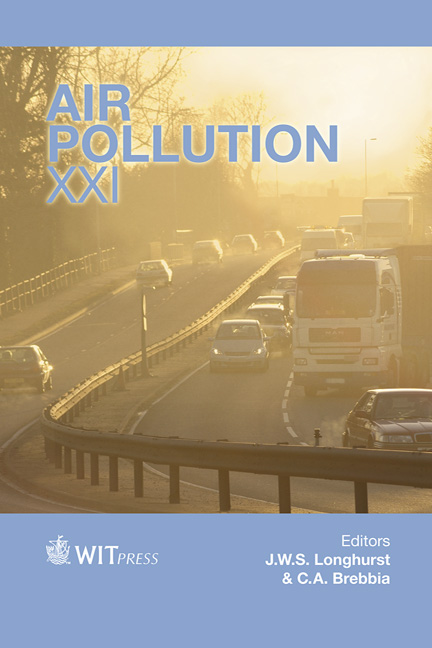Association Of Weather And Air Pollution Interactions On Daily Mortality In 12 Canadian Cities
Price
Free (open access)
Transaction
Volume
174
Pages
12
Page Range
15 - 26
Published
2013
Size
434 kb
Paper DOI
10.2495/AIR130021
Copyright
WIT Press
Author(s)
J. K. Vanos, S. Cakmak & L. S. Kalkstein
Abstract
The overall composition of the troposphere, including meteorological attributes and air pollution concentrations, affect human health outcomes. Our objectives were first to determine the likelihood of extreme air pollution events in select weather types within 12 Canadian cities, and second to examine the association between daily mortality and daily concentrations of air pollutants, assessing both single- and two-pollutant interactions. Each pollutant is examined to determine the likelihood of an extreme air pollution episode occurring in a given weather type and city. Next, we use a distributed lag nonlinear model (DLNM) to estimate city-specific relative risks of mortality (RR) due to the single and twoway- interactive effects of nitrogen dioxide (NO2), ozone (O3), sulphur dioxide (SO2), and particulate matter <2.5 m (PM2.5) from 1981–2008.We control for exposure timeframe and time lag in days, as well as synoptic weather type, dayof- week, and mean air temperature. In dry tropical (DT) or moist tropical plus (MT+) weather, an extreme pollution event (top 5% of pollution levels) is found to be on average, four-fold and two-fold more likely to occur, respectively. We found significant RR effects of single-pollutant exposure on mortality for all four air pollutants examined. In the DM, MM, and MT weather types, moderate increases in average risk estimates for all pollutants are found, with increases of 4.5%, 4.1%, and 5.1%, respectively. However, for the DT or MT+ weather types, the overall average increases due to pollutant exposure are higher, at 14.9% and 11.9%, respectively. The two-way interactive effects have weaker effect estimates. Adjusting for O3 lowers the effect estimates and variability of theKeywords
distributed nonlinear lag model, spatial synoptic classification, mortality, air pollution, heat stress, Canada, human health, relative risk





